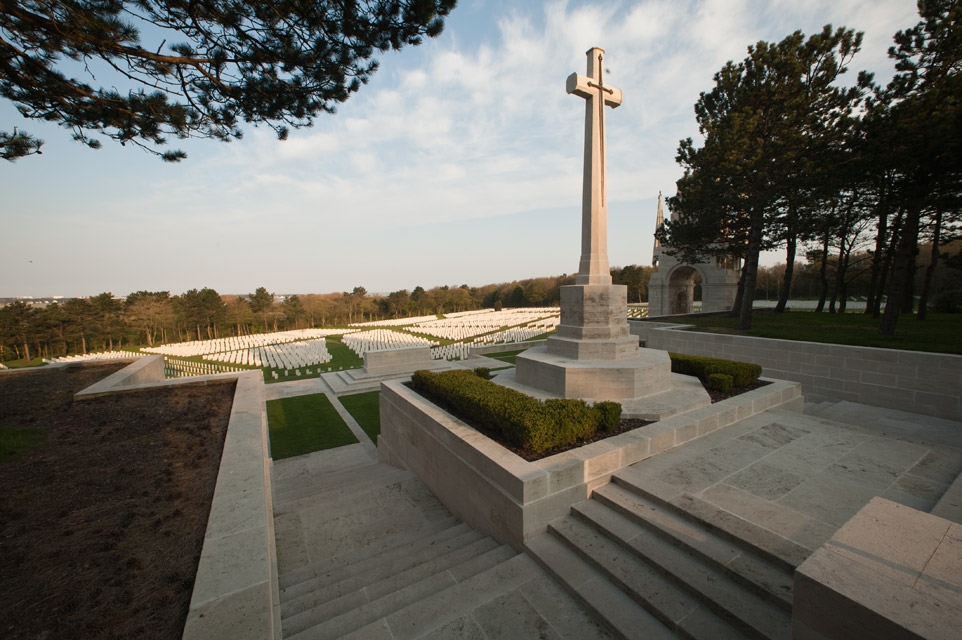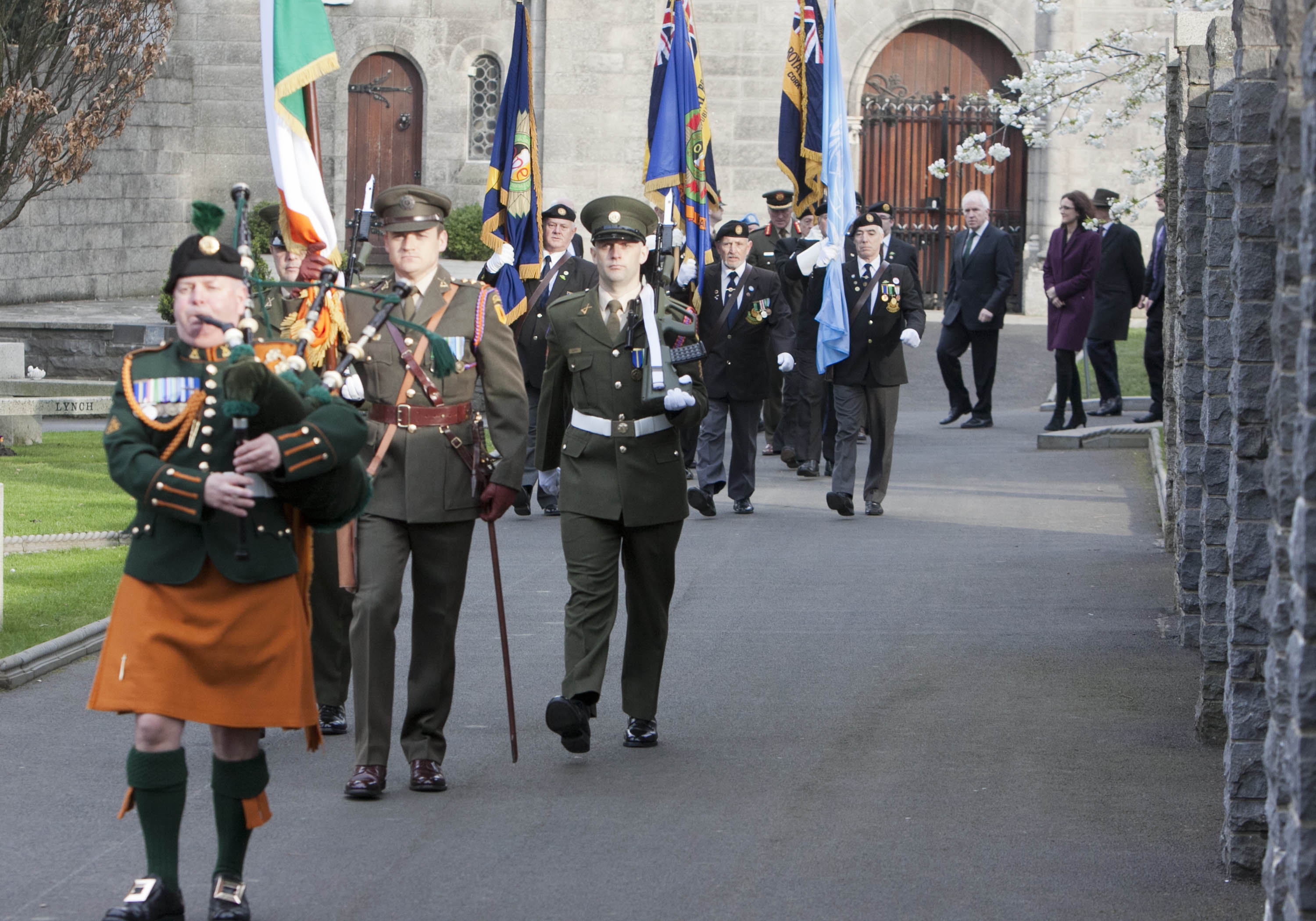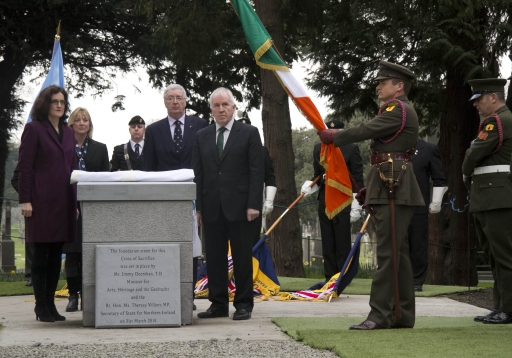British and Irish ministers have laid the foundation stone for the Cross of Sacrifice which will be constructed at a Dublin cemetery.
The UK’s Secretary of State for Northern Ireland, Theresa Villiers MP, and the Irish Minister for Arts, Heritage and the Gaeltacht, Jimmy Deenihan TD, jointly laid the first stone for the memorial in Glasnevin Cemetery on the 31st March 2014.
The cemetery holds the remains of Irish soldiers who died in the First and the Second World Wars.
The Cross of Sacrifice is being erected to mark the Centenary of the First World War, and will be the first such memorial in the Republic. Its construction is being carried out by the Commonwealth War Graves Commission with the support of the Irish Government.
The limestone cross, which is embedded with a downward facing bronze sword, was designed by Sir Reginald Bloomfield after the First World War for the Imperial War Graves Commission. It appears in most CWGC cemeteries.
The new cross at Glasnevin Cemetery is set to be unveiled later this year.
 The Cross of Sacrifice at Etaples Military Cemetery in France
The Cross of Sacrifice at Etaples Military Cemetery in France
“Poignant reminder”
The Irish Minister for Arts, Heritage and the Gaeltacht, Jimmy Deenihan, said that the cross will serve as a “poignant reminder” of the sacrifices made by Irishmen.
The UK’s Secretary of State for Northern Ireland, Theresa Villiers, said that it was a “great honour” for her to lay the foundation stone for the Cross of Sacrifice. She could “think of no better setting for a memorial to remember the tens of thousands of Irishmen who made the ultimate sacrifice during the World Wars”.
 The foundation stone
The foundation stone
Diedre Mills, the Commonwealth War Grave Commission’s Director of UK Operations was “delighted” that the construction of the cross had reached this new milestone.
She said that it will be become “an important focus for ongoing remembrance of those who died in two world wars”.
Anglo-Irish events
In recent years there has been an improvement in Anglo-Irish relations. Queen Elizabeth II’s visit to Ireland in 2011 – the first British monarch to visit the Republic – was seen as a watershed moment.
Ms. Villiers emphasised that the new cross at Glasnevin Cemetery will mean that “soon people from both Northern and Southern Ireland will have a place to come together in quiet contemplation to pay tribute to the memory of those, from across the whole island of Ireland, who gave so much for our freedom”.
Until Queen Elizabeth’s visit, it had been a century since the last British monarch visited what is now the Republic of Ireland. Elizabeth’s grandfather, King George V, travelled to Ireland in 1911, when it was part of the United Kingdom.
The First World War has previously sat uncomfortably in the Republic’s history. Irishmen simultaneously fought for the United Kingdom in the battlefields of Europe, but also clashed with British forces as republicans called for an end to British rule.
In 1916, the Easter Rising saw conflict on the streets of Dublin, as Irish Republicans who had declared independence were put down by the British Army.
The construction of the Cross of Sacrifice is part of a wider programme of events organised by the UK and Irish governments, which will mark a decade of anniversaries.
Key dates from a hundred years ago – including Ireland’s involvement in the First World War and its struggle for independence from Britain – will be commemorated.

Source: British Government, Irish Government and Commonwealth War Graves Commission
Images courtesy of the Commonwealth War Graves Commission
Posted by: Daniel Barry, Centenary News
